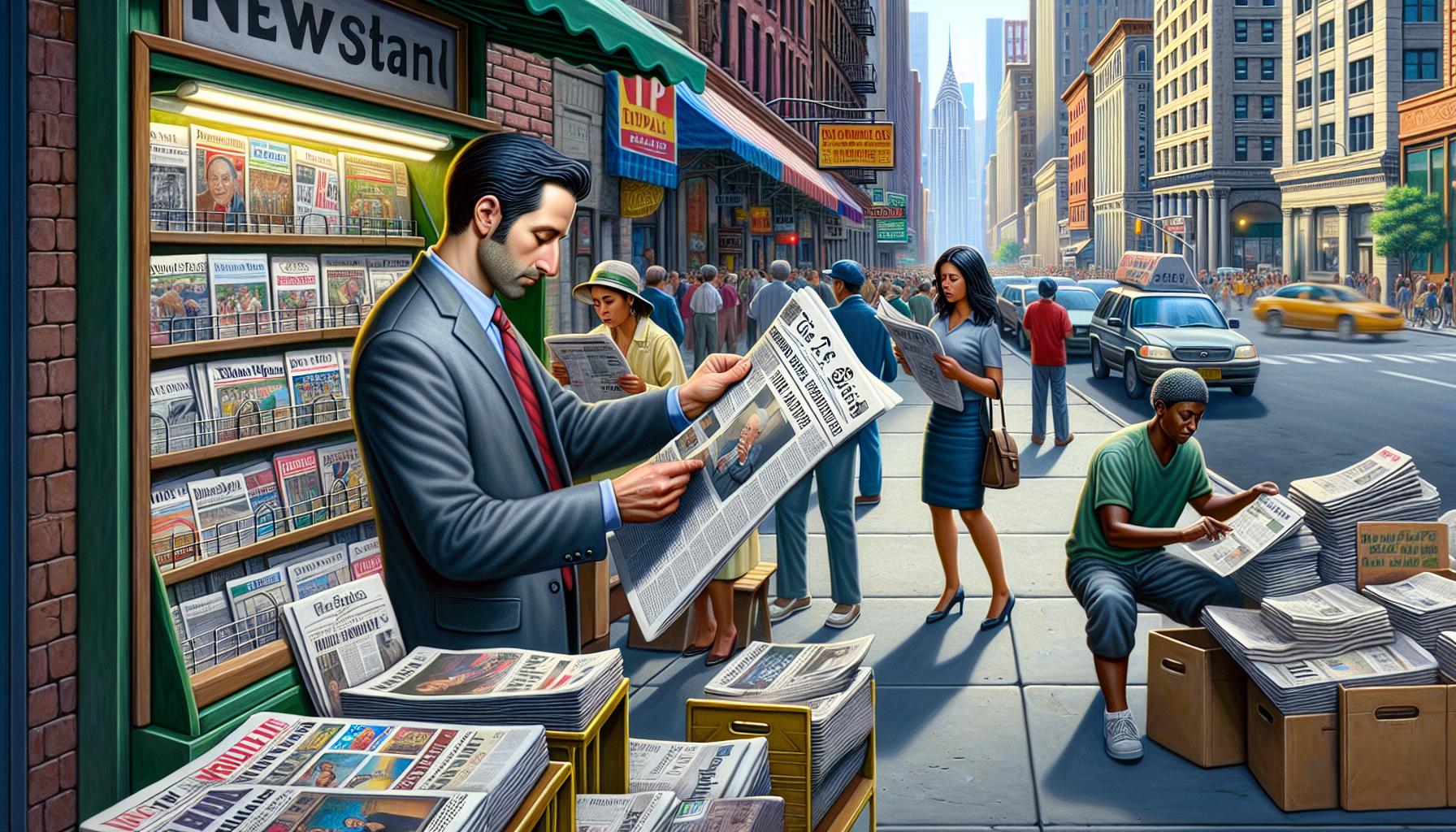Print media remains a powerful form of communication that has shaped society for centuries. From newspapers and magazines to books and brochures these traditional formats continue to influence how people consume information despite the digital revolution.
The diverse world of print media encompasses numerous formats each serving unique purposes. While newspapers deliver daily news and current events magazines offer in-depth coverage of specific topics. Books provide comprehensive knowledge and entertainment while pamphlets and flyers serve as effective marketing tools. These various forms of print media demonstrate the enduring impact of physical publications in today’s increasingly digital world.
What Is Print Media
Print media refers to physical publications that communicate information through printed text and images on paper surfaces. Traditional print media includes newspapers, magazines, books, journals, pamphlets, brochures, flyers, and direct mail materials.
Key characteristics of print media:
- Tangibility: Creates permanent records through ink-based printing processes
- Distribution: Reaches audiences through physical circulation and delivery systems
- Production: Involves mechanical or digital printing technologies
- Format: Presents content in structured layouts with headlines, body text and images
Print media serves multiple functions in communication:
- Information: Reports news, current events and factual content
- Education: Provides academic resources and learning materials
- Entertainment: Delivers stories, features and recreational reading
- Advertising: Promotes products, services and brand messages
Print media formats and their primary uses:
| Format | Primary Use | Typical Audience |
|---|---|---|
| Newspapers | Daily news & current events | General public |
| Magazines | Niche topics & features | Interest-based readers |
| Books | Long-form content | Varied demographics |
| Brochures | Marketing & information | Targeted consumers |
| Catalogs | Product showcasing | Potential customers |
Organizations employ print media for targeted communication campaigns through strategic placement in publications matching their intended audience demographics. Print media maintains credibility through established editorial standards fostering trust among readers.
Types of Newspapers and Their Impact

Newspapers remain a cornerstone of print media with distinct publication frequencies serving diverse audience needs. Each type offers unique coverage depth tailored to specific readership demands.
Daily Newspapers
Daily newspapers deliver time-sensitive news coverage through morning or evening editions. Major daily publications like The New York Times reach 2.1 million print subscribers with comprehensive reporting on:
- Breaking news updates on local crime rates housing markets regional politics
- Financial markets data stock prices business trends
- Sports coverage of professional amateur local teams
- Weather forecasts traffic updates community events
- Classified advertisements job listings real estate
| Circulation Type | Average Daily Readership | Print Ad Revenue |
|---|---|---|
| National Daily | 500,000+ subscribers | $1.5B annually |
| Metropolitan | 100,000-500,000 | $800M annually |
| Local Daily | 10,000-100,000 | $200M annually |
- Community papers covering neighborhood events school activities local government
- Alternative weeklies featuring arts entertainment investigative reporting
- Business journals tracking industry trends company profiles market analysis
- Special interest publications serving ethnic communities religious groups trade associations
| Publication Type | Average Circulation | Primary Revenue Source |
|---|---|---|
| Community Weekly | 5,000-25,000 | Local advertising |
| Business Journal | 15,000-50,000 | B2B advertising |
| Alt-Weekly | 25,000-100,000 | Entertainment ads |
Popular Print Magazines
Print magazines capture readers’ attention through specialized content, high-quality visuals, and targeted editorial focus. These publications maintain significant readership across diverse market segments despite digital alternatives.
Consumer Magazines
Consumer magazines target general audiences with specific lifestyle interests. People magazine reaches 3.4 million readers with celebrity news coverage. National Geographic delivers nature photography and exploration stories to 6.1 million subscribers. Better Homes & Gardens serves 7.6 million readers with home improvement tips, garden design inspiration and lifestyle content. Fashion publications like Vogue and Elle showcase seasonal trends, designer collections and beauty innovations to style-conscious readers.
| Magazine Title | Monthly Readership | Primary Focus |
|---|---|---|
| People | 3.4M | Celebrity News |
| National Geographic | 6.1M | Nature & Science |
| Better Homes & Gardens | 7.6M | Home & Lifestyle |
| Vogue | 1.2M | Fashion & Beauty |
Trade Publications
Trade publications deliver industry-specific information to business professionals. Modern Healthcare provides medical industry updates to 70,000 healthcare executives. Engineering News-Record serves 95,000 construction professionals with project analyses and industry forecasts. Advertising Age reaches marketing professionals with agency news and campaign insights. These specialized magazines feature:
- Technical articles with detailed specifications
- Market analysis reports with industry statistics
- Product reviews from industry experts
- Professional development resources
- Industry event coverage
- Vendor directories
Each trade publication maintains strict editorial standards to ensure accuracy and relevance for their professional audiences.
Books and Their Evolution
Books represent a fundamental form of print media that has evolved significantly since the invention of the printing press in 1440. The development of various book formats has made literature more accessible to diverse audiences worldwide.
Hardcover Books
Hardcover books feature durable cloth or leather-bound covers attached to high-quality sewn pages. Traditional publishing houses release new titles in hardcover format first, pricing them between $25-35. Notable examples include:
- Library editions with reinforced bindings built to withstand 100+ lending cycles
- Collector’s editions featuring gold-leaf detailing embossed covers textured paper
- Academic textbooks designed with sturdy construction for daily classroom use
- Coffee table books showcasing art photography travel content in large formats
- Mass-market paperbacks sized at 4.25″ x 6.87″ for retail display racks
- Trade paperbacks measuring 5.5″ x 8.5″ with higher quality paper stock
- Academic paperbacks designed for course adoptions budget-conscious students
- International editions printed on thinner paper for overseas distribution
| Book Format | Average Price | Typical Print Run | Shelf Life |
|---|---|---|---|
| Hardcover | $28.99 | 10,000 copies | 15+ years |
| Trade Paper | $16.99 | 20,000 copies | 5-7 years |
| Mass Market | $8.99 | 50,000 copies | 2-3 years |
Print Marketing Materials
Print marketing materials serve as tangible communication tools that businesses use to promote products services brands. These materials create lasting impressions through physical interaction with target audiences.
Brochures and Flyers
Brochures showcase detailed product information through bi-fold tri-fold z-fold formats. Standard brochures measure 8.5″ x 11″ feature high-quality images product specifications pricing details contact information. Flyers utilize single-sheet designs in sizes ranging from 5″ x 7″ to 8.5″ x 14″ focusing on single promotions events announcements.
Common brochure types include:
- Product catalogs displaying multiple items with specifications
- Company portfolios highlighting services capabilities
- Event programs outlining schedules activities
- Sales sheets featuring product benefits features
- Travel guides presenting destination information attractions
Direct Mail Marketing
Direct mail marketing delivers targeted promotional materials directly to consumers’ mailboxes. Marketing pieces include:
- Postcards (4″ x 6″ 5″ x 7″ 6″ x 11″)
- Letters personalized with recipient information
- Self-mailers combining letter envelope functions
- Catalogs featuring product collections pricing
- Promotional cards offering coupons discounts
| Format | Response Rate |
|---|---|
| Postcards | 4.25% |
| Letters | 4.9% |
| Catalogs | 3.9% |
| Self-mailers | 4.1% |
| Oversized envelopes | 5% |
The Future of Print Media
Print media maintains a significant presence in the digital age through strategic adaptations and technological integration. Digital printing technologies enable customized content production with enhanced efficiency and reduced environmental impact. Modern printing processes incorporate sustainable materials and eco-friendly inks, addressing environmental concerns while maintaining quality standards.
Digital Integration
Print media companies embrace hybrid models that combine traditional formats with digital elements:
- QR codes linking printed materials to online content
- Augmented reality features in magazines
- Interactive print advertisements with digital components
- Cross-platform subscription packages offering print and digital access
Market Evolution
Print media demonstrates resilience through targeted market strategies:
| Segment | Growth Rate (2023) | Key Adaptation |
|---|---|---|
| Luxury Magazines | +3.2% | Enhanced paper quality |
| Custom Publications | +4.5% | Personalized content |
| Art Books | +2.8% | Limited editions |
| Corporate Reports | +1.9% | Integrated digital tools |
Innovation Trends
Print media embraces technological advancements:
- Variable data printing for personalized content delivery
- Smart paper technology incorporating electronic elements
- Environmental sustainability through recycled materials
- Enhanced printing techniques for superior image quality
Niche Markets
Specialized print media sectors show strong growth potential:
- Independent magazines serving specific communities
- Limited-edition collectible publications
- Educational materials with interactive components
- Premium coffee table books
- Custom corporate communications
- Print-on-demand services reducing inventory costs
- Subscription-based delivery systems
- Hybrid retail presence combining physical and digital outlets
- Direct-to-consumer shipping options
- Local distribution partnerships
Conclusion
Print media remains a vital force in modern communication despite the digital revolution. From newspapers and magazines to books and marketing materials these traditional formats continue to evolve and adapt through technological innovation. The integration of sustainable practices hybrid models and smart technologies has strengthened print media’s position in today’s marketing landscape.
The enduring appeal of tangible printed materials combined with their proven effectiveness in reaching target audiences ensures that print media will maintain its relevance. As the industry embraces new printing technologies and eco-friendly practices while catering to niche markets print media demonstrates its ability to thrive alongside digital platforms in our increasingly connected world.
